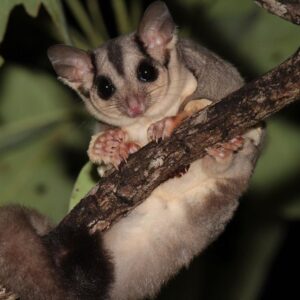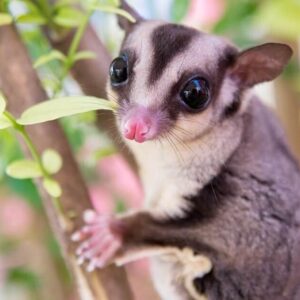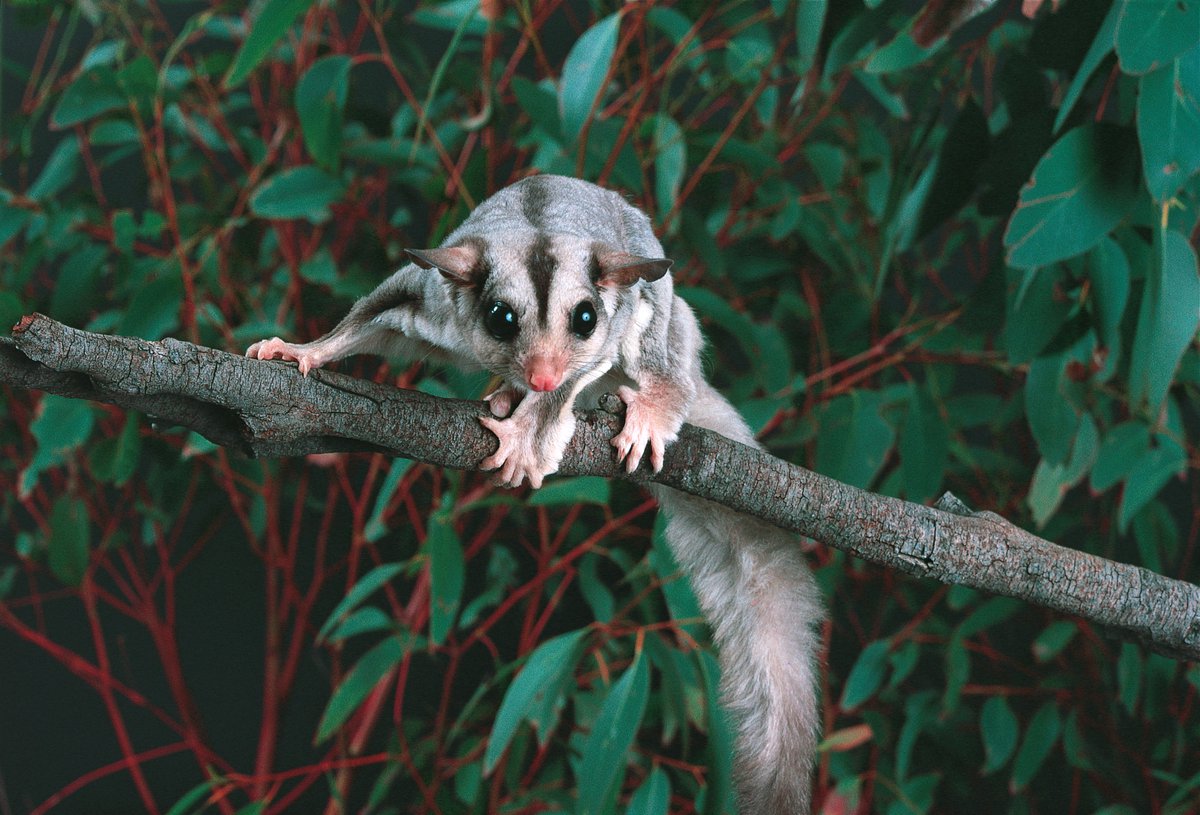Introduction
Sugar gliders are lovely and sociable creatures that make great pets for those willing to invest time and effort in their care. Native to Australia, those small marsupials are recognized for their capability to glide through the air using a membrane between their front and back legs. Creating an ideal environment for sugar gliders at home is a fulfilling journey that involves understanding their unique needs and providing the best possible care.
Picking the Right Cage Size for Sugar Glider
The right cage dimension is important for your sugar gliders’ wellness together with joy. For a pair of gliders go for a cage that goes to at least 24 inches high by 24 inches broad. Larger is constantly much better so go as huge as you can manage as well as have area for. Offer your gliders numerous stages linked by ramps, ropes or branches. Sugar gliders are energetic as well as love climbing up, leaping, together with moving. Give space for them to climb up, perch, nest and also play. Consist of bird toys, ropes, swings as well as various other enrichment products to keep them boosted.
Having a large cage also provide you area to include important items like:
- Multiple food and water dishes so they always have get right to entry of
- A litter box for easier cleaning
- Hiding spots in which they could move if they want privacy
Providing the proper cage set-up and size is one of the most important matter you might do to keep your sugar gliders pleased as well as healthy and balanced. Provide lots of space, great deals to do as well as all the needs they require. Your gliders will thrive and reward you with their playful, loving personalities.
Temperature and Lighting
Ideal Temperature
Sugar gliders are most snug in warm temperatures ranging from 75 to 82 F. Colder temperature levels can emphasize them out as well as lead them to unwell so maintain your glider area well-insulated. Making use of area heating units, home heating lamps together with nesting boxes can assist change the temperature level.
Humidity Levels
These little marsupials need moderate to high humidity levels around 50-60% to keep their fur and skin moist. You can use humidifiers, misters, and damp substrate within the enclosure to increase humidity. Ensure any water gadget are securely set up so your gliders can not knock them over or chew the cords.
Air Circulation
Good air flow is also important for your sugar gliders. Stale, stagnant air can lead to respiratory issues. Use fans to keep the air circulating in the room and change about 25% of the enclosure air day by day. Be very careful to avoid drafts, though, which can chill your gliders.
Furnishing The Environment for Sugar Glider
To keep your sugar gliders satisfied and healthy, providing environmental enrichment is key. Furnishing their habitat with various forms of enrichment will stimulate them physically and mentally.
Toys
Sugar gliders love toys that encourage natural behaviors like climbing, jumping and gliding. Provide bird toys, ropes, swings and ladders at couple of levels of their cage. Puzzle toys that dispense treats when manipulated a certain way are excellent for mental stimulation. Rotate different toys to keep things interesting.
Nesting Boxes
Give your sugar gliders nesting boxes, pouches or fabric hammocks so they have spots to rest, sleep and raise their young. Place a couple of nesting areas at specific spots inside the cage. Make sure any fabric items are tightly woven so little paws and claws do not get stuck.
Natural Branches
Add natural tree branches to the cage to give your sugar gliders opportunities to climb, jump and chew. Untreated bird perches, driftwood and eucalyptus branches all work great. Be sure to thoroughly clean and bake any natural wood objects before putting them in the cage to cast off any parasites or pests.
Nutrition and Diet
Protein is Essential
Sugar gliders are omnivores, in order that they need a diet high in protein to thrive. Aim for giving your glider a diet that consists of at least 40-50% protein. Good sources include:
- High-quality pelleted food – Look for a pellet specifically for sugar gliders that lists a protein like chicken, fish or egg as the first ingredient.
- Mealworms and crickets – Live feeder insects are a great source of protein. Offer 2-3 insects per glider, 2-3 times a week.
- Cooked meat – Dice up some cooked chicken, fish, or egg and offer as an occasional treat in moderation.
Fruits and Veggies
While sugar gliders need a lot of protein, they also enjoy fruits, vegetables, and the occasional carbohydrate. Some good options include:
- Sweet fruits: apples, berries, melons
- Leafy greens: kale, spinach, collard greens
- Starchy veggies: corn, sweet potato, pumpkin
- Oatmeal or high-fiber cereal: offer 1-2 times a week in moderation
Supplements
With good diet, you may want to provide some supplements for your sugar glider:
- Calcium and vitamin powder – Sprinkle on their food 2-3 times a week.
- Small animal vitamin drops – Place a few drops in their water bottle 2-3 times a week.

Keeping the Cage Clean for Healthy Sugar Gliders
For the well-being of your sugar glider, it’s necessary to keep their cage clean. It is your responsibility as their owner to ensure that their surroundings are perfect.
Clean the Cage Thoroughly and Frequently
At least once a week, you must thoroughly clean your sugar glider’s cage by taking out all of the toys, bedding, and accessories and washing everything in hot, soapy water. Make sure to thoroughly rinse and dry to prevent the accumulation of residue. Spot-clean the cage every day by wiping down surfaces and any messes. Replace any soiled or damp bedding right away to prevent the growth of mold or bacterias.
Your gliders will be happy with a clean space to call home. Not only will their cage smell better, but keeping it clean reduces health dangers like respiratory infections or parasites. When cleaning, look for any signs and symptoms of illness or injury in your gliders and address issues straight away.
Provide Multiple Food and Water Sources
Have multiple food bowls, water bottles, and feeding platforms at different spots inside the cage so your gliders have options. Check food and water levels every day and fill up or replace as wanted. Wash all food bowls weekly with warm water and replace water bottles every few days. Bottled or filtered water is great to your gliders.
Spot Clean Accessories
Any cage accessories like exercise wheels, ropes, hamster tubes or nesting boxes ought to be spot cleaned as needed and sanitized weekly. Built up waste, odors or stains can be bad for your gliders. Be sure all parts are completely dry to avoid sharp edges before returning them to the cage.
| Aspect | Guidelines |
|---|---|
| Habitat | Large, secure enclosure with horizontal space; bar spacing ≤ 1/2 inch |
| Cage Accessories | Branches, perches, hammocks, nesting boxes |
| Diet | Balanced mix of fresh fruits, vegetables, proteins, and specialized glider diet; avoid high sugar and processed treats |
| Hydration | Access to clean, fresh water at all times |
| Temperature & Humidity | Maintain 70-80°F temperature, 50-70% humidity; make sure the ventilation is proper |
You can also visit https://www.britannica.com/animal/glider-marsupial
FAQs
-
Are sugar gliders difficult to care for as pets?
Sugar gliders require attention, however with the right care, they can make super pets.
-
Do sugar gliders need any special permits to keep as pets?
In some countries, you require permits or licenses to keep sugar gliders as pets. Check your local rules before adopting one.
-
Can sugar gliders be potty trained?
Sugar gliders can be trained at some point, but accidents might be happen. You can provide a designated area for them to relieve themselves.
- How can I get my existing sugar gliders to accept my new ones?It’s best to gradually introduce new sugar gliders so they may get used to each other’s smells and company.
- What symptoms can indicate that my sugar glider is ill?Any physical changes or alterations to appetite or energy levels are signs of disease in sugar gliders.
-
How frequently should I clean the sugar glider enclosure?
Regular cleaning is important. Aim to clean the enclosure and update bedding at least as soon as per week, with spot cleaning as needed.




This article is a gem! The insights provided are very valuable. For additional information, check out: DISCOVER MORE. Looking forward to the discussion!